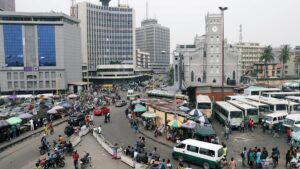The Central Bank of Kenya (CBK) has retained its benchmark lending rate at 9.0 per cent for the sixth straight time since bringing it down in July 30 2018, sparing borrowers higher cost of loans.
The Monetary Policy Committee (MPC) which is CBK’s top decision making organ met on Wednesday to review the country’s macroeconomics.
Chaired by CBK governor Patrick Njoroge, the committee held retained the rates where there have been for almost a year, even as the capping of interest rates continues to affect lending trends by banks.
President Uhuru Kenyatta signed into law a Bill capping bank interest rates at 4 per cent above the Central Bank Benchmark Rate, in August 2016.
With the bench mark rate at 9.0 per cent, banks can only charge interest of up to 13 per cent.
READ ALSO:Why banks in Kenya will lend at a maximum 13%
Why retain
Among the reason the MPC has retained the rates, it says, is domestic macroeconomic stability, increased optimism on the economic growth prospects, and increased global uncertainties.
The decision has also been based on Month-on-month overall inflation which remained relatively stable and within the target range in May and June 2019.
The inflation rate stood at 5.7 percent in June compared to 5.5 per cent in May.
However, food inflation rose to 6.6 per cent in June from 6.0 per cent in May, reflecting increases in the prices of non-vegetable food crops particularly maize, due to uncertain supply.
“Non-food-non-fuel (NFNF) inflation remained below five per cent, indicative of muted demand pressures and spillover effects of the recent rise in fuel prices,” Governor Njoroge said in a statement.
“Overall inflation is expected to remain within the target range in the near term largely due to expectations of lower food prices following improved weather conditions, and lower electricity prices with the reduced reliance on expensive power sources,” the Governor added.
The effect of the July 1, 2019, excise tax indexation is expected to have a moderate impact on inflation, CBK has noted.
The foreign exchange market has remained relatively stable, supported by the narrowing of the current account deficit to 4.2 per cent of GDP in the 12 months to June 2019 from 5.4 per cent in May 2018.
“The narrowing reflects strong growth in diaspora remittances, resilient performance of exports particularly horticulture, higher receipts from tourism and transport services and slower growth in imports of food and SGR-related equipment,” Njoroge said.
The current account deficit is expected to narrow to 4.5 per cent of GDP in 2019 from 5.0 per cent in 2018. The CBK foreign exchange reserves, which currently stand at US$9.6 billion (6.0 months of import cover), continue to provide adequate cover and a buffer against short-term shocks in the foreign exchange market, according to the central bank.
Private sector credit
Private sector credit grew by 5.2 per cent in the 12 months to June, compared to 4.4 per cent in May, CBK has noted, even as banks continue to deny households and individuals whom they have profiled as “high risk borrowers”.
READ:Kenyan Banks begin feeling the interest rates cap effects
Since the interest rate cap law came into place, lenders have been pushing more funds into government securities where they feel assured of returns, as they mitigate Non-Performing-Loans (NPLs) in their books.
MPC on Wednesday reported strong growth in credit to the private sector, which it says was observed in the manufacturing sector (11.4 per cent), consumer durables (21.3 per cent) and private households (7.6 per cent).
“Private sector credit growth is expected to continue to strengthen in the remainder of 2019, partly due to the rollout of innovative, bank-initiated credit products targeting Micro Small and Medium Enterprises (MSMEs),” Njoroge.
Banking sector
The banking sector remains stable and resilient, according to the regulator, which notes average commercial banks’ liquidity and capital adequacy ratios stood at 50.6 per cent and 18.2 per cent, respectively, in June.
READ ALSO:Kenya’s listed banks resilient as return on equity rises to 19.2%
The ratio of gross NPLs to gross loans stood at 12.7 per cent in June compared to 12.9 per cent in April, partly due to decreases in NPLs in the manufacturing, building and construction, financial services and electricity and water sectors.
“Banks have continued with mitigation measures against NPLs, including enhanced recovery efforts. This has been supported by the recent payments of pending bills by the Government,” the committee noted.
Economy
The economy remained strong in the first quarter of 2019, despite the effects of the delayed long rains on agricultural production.
Real GDP growth stood at 5.6 per cent, reflecting a stronger than expected performance of agriculture and a resilient services sector, particularly information and communication, accommodation and restaurants, and transport and storage.
Leading indicators of economic activity point to stronger growth in the second quarter of 2019. Consequently, growth in 2019 is expected to remain strong, supported by agricultural production, strong growth of MSMEs and the service sector, foreign direct investment, and a stable macroeconomic environment.
READ ALSO:How Kenya managed to grow its economy by 6.3%
Additionally, the alignment of the FY2019/20 Government Budget to the Big 4 priority sectors is expected to boost economic activity in manufacturing, agriculture, construction and real estate, and health sectors.
The MPC Private Sector Market Perception Survey conducted in July 2019 indicates that inflation expectations remain well anchored within the target range, mainly due to expectations of lower food prices following improved weather conditions.
The Survey also shows increased optimism that economic growth will remain strong in 2019 due to, among other factors, continuing payment of pending bills, implementation of the Big 4 projects, improved weather conditions, ongoing public infrastructure investments, expected growth in tourism, and a stable macroeconomic environment.
READ:How Kenya’s economy will perform in 2019
However, the optimism is tempered by the slow growth in private sector credit and concerns on the volatility of international oil prices.
The Committee noted the gradual demonetisation (withdrawal of the older Ksh 1,000 notes) and the close monitoring by CBK will ensure that the process is not disruptive to the economy.
Global arena
The MPC has noted increased uncertainties in the global economy. Global economic growth in 2019 is likely to be weaker than previously anticipated, largely due to escalating trade tensions between the U.S and China, increased concern with regard to the resolution of Brexit, and volatility in international oil prices partly due to heightened geo-political tensions.
READ ALSO:How is Africa suffering from US-China trade wars?
These developments may result in increased instability in the global financial markets. The Committee noted that inflation expectations remained well anchored within the target range, and that the economy was operating close to its potential.
“However, there is need to be vigilant on the possible effects of the recent increases in fuel prices, the ongoing demonetisation, and the increased uncertainties in the external environment,” Njoroge said.
He said the MPC will continue to closely monitor developments in the global and domestic economy, including any perverse response to its previous decisions, and stands ready to take additional measures as necessary.
The rates came down to 9.0 per cent from 9.5 per cent in July last year.











